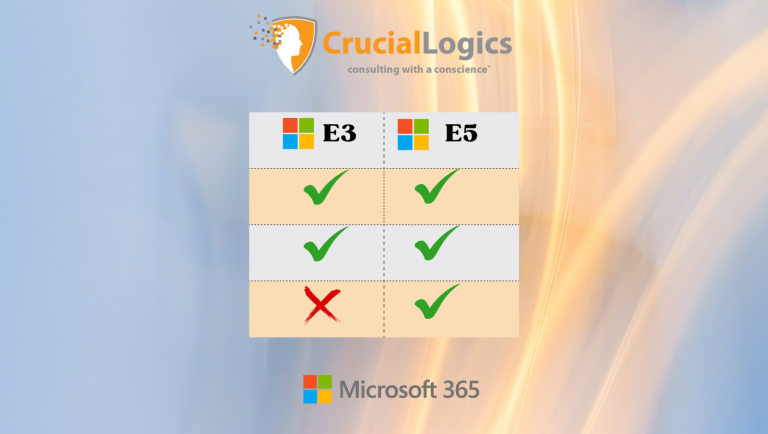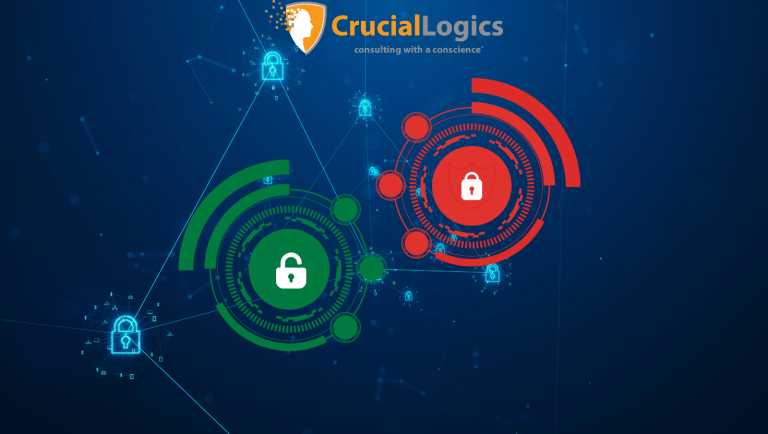Healthcare organizations are not immune to cyberattacks. When patient records are leaked, the impact goes far beyond reputational damage. Data breaches can delay surgeries, compromise patient outcomes, and in some cases, lead to loss of life. The financial toll, often in the form of regulatory fines and operational disruption, can cripple even well-resourced institutions. For patients, a breach means sensitive personal data may end up on the dark web, critical health information exposed, and their privacy potentially violated.
Cybersecurity in healthcare should no longer be treated as a purely technical issue confined to the IT department. It is a matter of patient safety, institutional trust, and enterprise risk. Protecting sensitive data means protecting the very core of healthcare delivery.
In this blog, we explore a comprehensive approach to healthcare cybersecurity, along with proven strategies to safeguard both institutional systems and patient data.
Understanding Cyberthreats in The Healthcare Industry
Healthcare organizations exist to safeguard patient well-being, deliver quality care, and save lives in critical moments. In doing so, they hold vast amounts of data that carry significant financial value for bad actors.
These attackers understand the stakes. With patient outcomes and institutional reputation at risk, even a single breach can yield significant consequences. Financial information, personally identifiable data such as social security numbers, patient-specific healthcare records, and intellectual property are all lucrative targets.
Beyond the value of what’s stolen, the cost of responding to a healthcare breach is staggering. For many organizations, the remediation expense is more than three times higher than in other industries—often due to the complexity of the systems and the sensitivity of the data involved.
The reality check: the evolving threat landscape in healthcare
Ransomware, email compromise, third-party exposure, and vulnerabilities in medical devices like pacemakers with wireless monitoring and ultrasound machines with cloud connectivity (Internet of Medical Things) continue to widen the risk landscape in healthcare.
While medical devices are intended to protect patient data, they often represent one of the weakest points in the security chain. Many still operate on legacy systems never built with cybersecurity in mind, leaving behind outdated software, fragmented systems, and poorly integrated networks.
The absence of basic safeguards only compounds the problem. The Change Healthcare cyberattack, for instance, lacked multifactor authentication. That one gap exposed the records of more than 100 million individuals.
When legacy systems are combined with complex device interfaces, multiple connectivity options, and minimal interoperability standards, healthcare organizations face a dense web of communication issues across systems, networks, and vendors.
According to Statista, the global number of hospitals is projected to increase by 1.17% by 2029. By that time, the number of connected medical devices worldwide is expected to approach 1.7 million, many of which will lack a secure-by-design foundation.
This serves as a clear reminder to healthcare organizations: security by design must become a core principle in the development and deployment of IT infrastructure.
A Healthcare Cybersecurity Framework That Moves Beyond Mere Compliance
Many healthcare organizations still assess data-sharing risks using traditional IT security checklists. These frameworks often prioritize access control and network protection, but they overlook a growing concern: the inherent risk within the data itself.
To effectively manage cybersecurity risks, organizations require a more comprehensive and integrated approach. A risk framework focused solely on compliance cannot capture the complexity of today’s threat landscape. What’s required instead is a multidimensional assessment model—one that evaluates technical, legal, operational, and strategic risks in parallel.
Drawing from successful implementations and lessons learned from prior projects, we recommend adopting a four-tier risk assessment framework that helps healthcare organizations secure sensitive organizational and patient data.
1) Technical Re-identification Risk Assessment
Every decision to secure healthcare data should begin with an honest evaluation of how easily that data can be traced back to individuals using current attack methods. This is not a theoretical exercise. It is about understanding the real-world accuracy of re-identification techniques that are already proven to work.
Healthcare organizations should start by running controlled red team exercises on their own datasets. The goal is to determine how accurately those records can be re-identified using publicly available tools and models. If testing shows re-identification accuracy above 75%, the organization is already in a high-risk category that requires strong mitigation measures. At 85%, the data can no longer be considered safe, and a fundamental change in the data-sharing strategy becomes necessary.
A thorough technical assessment should also consider the skill level required to carry out these attacks. There is a major difference between threats that demand advanced deep learning expertise and those that can be executed using standard machine learning tools. The growing accessibility of AI frameworks has lowered the barrier significantly. What once required a team of researchers can now be performed by students with entry-level technical skills and access to open-source software.
2) Legal and Regulatory Risk Assessment
The legal rules around data sharing are changing quickly, and the requirements vary from one region to another. Every healthcare organization needs to understand where it stands across multiple fronts, including malpractice, product liability, privacy, and data protection laws.
Research from Stanford’s Human-Centered Artificial Intelligence (HAI) program shows that courts still struggle to apply traditional legal standards to AI and software-based systems. Because of this, legal outcomes are often unpredictable. While this can make it harder for individuals to prove fault, it also means healthcare organizations face uncertain risks that can turn severe if something goes wrong.
Under the General Data Protection Regulation (GDPR), Article 9 places strict rules on how health, biometric, and genetic data is handled. Organizations must prove that data collection is necessary, that patients have given clear consent, and that the data is only used for its stated purpose.
Healthcare organizations must therefore go beyond compliance. This means reassessing their data-sharing practices, involving legal and privacy experts early, and building clear accountability around how data is collected, processed, and shared.
3) Operational Risk Assessment
Operational risks go beyond technology and law. They involve the real-world challenges of managing and maintaining privacy-focused data-sharing programs. These risks are often underestimated, yet they can cause the most significant harm if not properly managed.
Data governance is one of the biggest operational challenges. Data-sharing initiatives, whether for innovation or research, usually bring together several partners, each with their own priorities, technical capacity, and regulatory obligations. If these groups are not aligned, even well-designed security systems can fail. In fact, many data-sharing partnerships break down not because of technical flaws, but because of poor coordination and unclear accountability.
Another critical area is incident response. Organizations must expect that incidents will happen and prepare accordingly. This means having clear processes for containment, notification, and recovery.
4) Strategic Risk Assessment
Strategic risks focus on the long-term impact of data-sharing decisions. These include how data policies affect your organization’s mission, reputation, and relationships with patients, partners, and regulators.
Research competitiveness is a key consideration. Organizations that over-restrict data sharing risk being left behind in collaborative research or losing the ability to attract leading researchers. On the other hand, a single high-profile privacy breach can result in lost partnerships, reduced funding, and long-term damage to an institution’s credibility.
Perhaps the most important factor is patient trust. Healthcare depends on patients’ willingness to share sensitive information for care and research. A single re-identification incident can undo years of relationship building and significantly weaken public confidence. Rebuilding that trust takes far longer than preventing the breach in the first place.
Cybersecurity Strategies for Protecting Sensitive Patient Data
A risk assessment framework without clear action is purely theoretical. The goal is to apply proven strategies that protect patient privacy without stalling innovation. Based on real-world successes and lessons learned from failed initiatives, a layered defense approach offers the most effective path forward. This approach combines technical, procedural, and contractual safeguards to reduce exposure.
1) Technical Mitigation: Building Privacy into the Design
The most reliable privacy protection begins at the point of data collection, not after. Traditional anonymization methods, such as removing names or dates, are no longer sufficient against advanced attacks. Instead, organizations should adopt privacy-by-design principles that embed protection into every stage of data handling.
Differential Privacy
Differential privacy has emerged as the leading standard for protecting sensitive data while maintaining research value. The technique introduces controlled noise into datasets, making it statistically difficult to trace information back to individuals.
However, this approach requires technical skill and careful calibration. Privacy strength is measured by an “epsilon” value. Lower values increase protection but reduce data quality. Finding the right balance depends on the organization’s use case, tolerance for data distortion, and compliance requirements.
Federated Learning
Federated learning offers another strong defense. Instead of moving healthcare data to a central location, this method allows organizations to train shared AI models while the data stays on local systems. Only model parameters, not raw data, are exchanged. This reduces the likelihood of exposure while enabling collaboration across hospitals or research centers.
Synthetic Data Generation
Synthetic data generation is a third strategy gaining attention. Using generative models, organizations can create artificial datasets that retain statistical and diagnostic accuracy without linking back to real patients. While promising, synthetic data must be validated carefully to avoid introducing bias or inaccuracies that could compromise medical insights or AI performance.
2) Procedural Mitigation: Governance and Access Controls
Effective protection requires strong procedural measures that control how data is accessed, used, and monitored throughout its entire lifecycle.
A key procedural safeguard is the creation of multi-party data governance frameworks. The All of Us Research Program is an excellent example of this approach. It demonstrates the value of clear governance structures with well-defined roles, responsibilities, and accountability measures. Strong governance frameworks typically include data stewardship committees, privacy review boards, and routine compliance audits to ensure that privacy requirements are consistently met.
Another important procedural control is user vetting and training. Every individual with access to patient healthcare data should undergo background checks, complete privacy and security training, and commit to specific usage rules. The All of Us program enforces this by requiring all researchers to complete privacy training and agree to detailed data-use restrictions before they can access participant information.
Organizations should also invest in data usage monitoring and anomaly detection systems. These systems track access patterns, query frequencies, and data outputs in real-time. When properly configured, they can detect unusual or unauthorized activities that may signal a potential attempt at data security or policy breach.
Cybersecurity Regulations in the Healthcare Industry
Securing sensitive patient data across connected medical devices, hospital networks, and healthcare IT infrastructure requires technical safeguards and full compliance with evolving cybersecurity regulations.
In North America, key frameworks and standards include:
- HIPAA (Health Insurance Portability and Accountability Act) – Defines standards for protecting patient health information (PHI) and securing electronic PHI (ePHI) created, received, maintained, or transmitted electronically.
- HITECH Act (Health Information Technology for Economic and Clinical Health) – Reinforces HIPAA by introducing stronger provisions and penalties for non-compliance.
- ISO/IEC 27001 – A global framework for establishing, implementing, and continuously improving an Information Security Management System (ISMS) within healthcare organizations.
- NIST (National Institute of Standards and Technology) – Provides a comprehensive cybersecurity framework for managing risk in high-impact industries such as healthcare.
- GDPR (General Data Protection Regulation) – Originating in the EU, this regulation governs how healthcare organizations handle the personal data of EU residents, emphasizing lawful processing and data protection principles.
- California Privacy Rights Act (CPRA) – Enhances privacy rights for California residents by tightening rules on data collection, use, and storage.
- IEC 81001-5-1 – Establishes cybersecurity requirements for healthcare software and devices, ensuring confidentiality, integrity, and availability of medical data, and protecting it from unauthorized access or alteration.
- UL 2900-2-1 – Focuses on patient safety, ISO 14971 compliance, lifecycle management, proper documentation, and structured penetration testing.
- Medical Device Regulation (MDR) 745/2017 – Sets EU requirements for the performance, safety, and risk management of medical devices.
- Personal Health Information Protection Act (PHIPA) – Establishes confidentiality rules for the collection, use, disclosure, access and amendment of personal healthcare information.
Conclusion
Protecting patient healthcare data is a collective responsibility that unites regulators, healthcare professionals, and patients under a shared goal of trust. When any link in this chain weakens, the entire security framework is compromised.
Beyond a governance-first approach, effective cybersecurity in healthcare demands prescriptive controls and a clearly defined roadmap. It also extends to identity and email security, minimizing attack surfaces, encrypting data both at rest and in transit, managing vulnerabilities, and maintaining continuous monitoring and response.
To learn more about the evolving healthcare cybersecurity landscape and how to strengthen your defense through effective planning, implementation, and monitoring, speak with us today.






